Chanterelle mushrooms are a delicious and highly sought-after type of mushroom that you can find growing in the wild. These mushrooms are prized for their distinctive flavor and versatility in the kitchen, which makes them a valuable find for wild mushroom foragers.
In order to successfully forage for chanterelle mushrooms, it is important to know where to look for them and how to identify them. Chanterelles are most commonly found in deciduous and coniferous forests and tend to grow in areas with well-drained soil. Look for them growing in close proximity to trees, especially oak and pine trees.
To identify chanterelle mushrooms, I look for mushrooms with a distinctive golden or orange color and a wavy, trumpet-shaped cap. The stem of the mushroom should be thin and smooth, and the gills under the cap should be blunt and ridged, rather than sharp and pointed like those of some other types of mushrooms. It is important to be certain of the identification of any wild mushroom before consuming it, as some types of mushrooms can be toxic if eaten.
When foraging for chanterelle mushrooms, it is important to be respectful of the environment and the ecosystem in which they grow. Only take a small number of mushrooms at a time and be sure to leave plenty behind for the rest of the ecosystem. It is also a good idea to get familiar with any local laws or regulations regarding the foraging of wild mushrooms.
Cooking with chanterelle mushrooms is a delight, as their flavor is rich and slightly fruity. They can be sautéed, grilled, or used in a variety of dishes such as pasta, risotto, or soups. Whichever way you choose to enjoy them, foraging for and finding your own chanterelle mushrooms is a rewarding and delicious experience.
Different Chanterelle’s
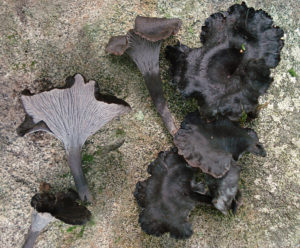
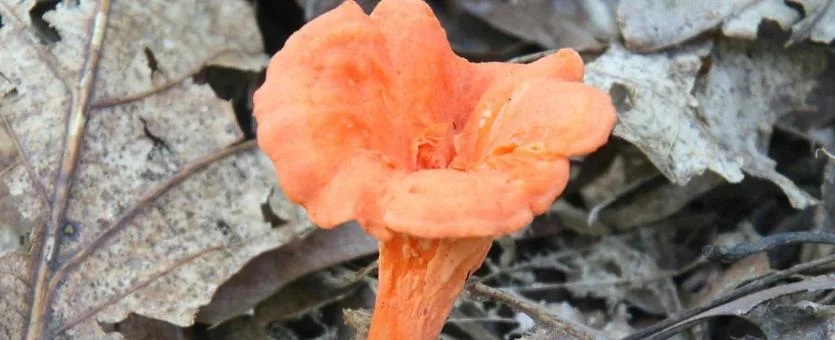
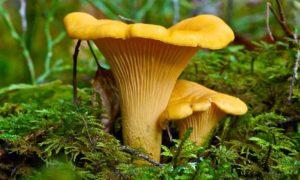
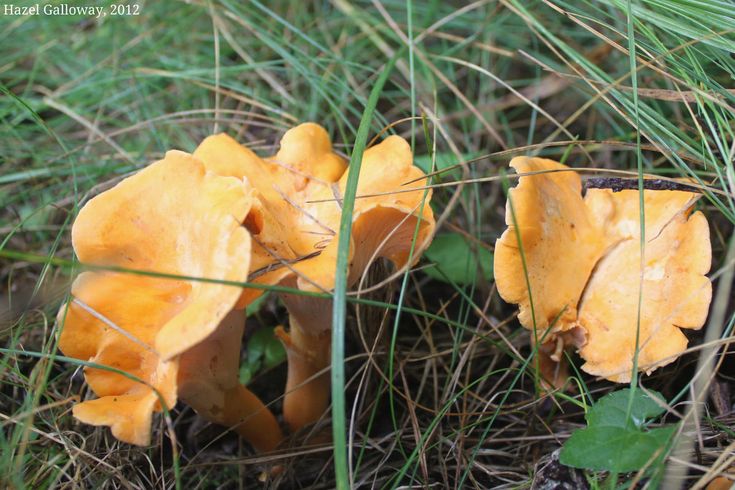
WARNING – NO NOT MISIDENTIFY THIS FOR A CHANTRELLE
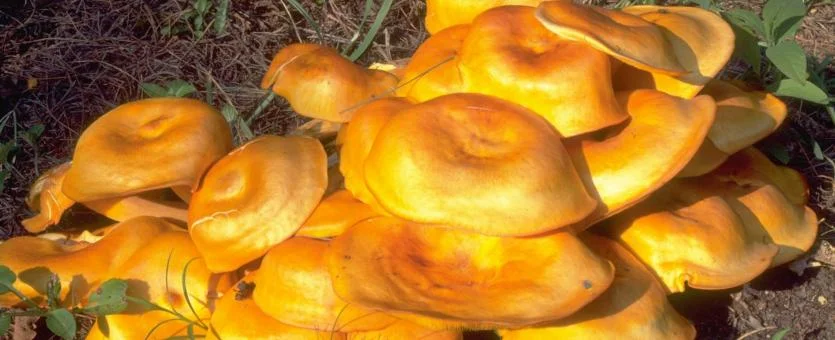
The Jack O’Lantern mushroom, also known as Omphalotus illudens, is a type of mushroom that is native to North America. It gets its name from its bright orange color and its ability to glow in the dark, which gives it the appearance of a carved pumpkin, or “jack o’lantern.”
The Jack O’Lantern mushroom is poisonous and should not be eaten. It contains a toxin called illudin, which can cause severe gastrointestinal distress if ingested. Symptoms of poisoning can include abdominal pain, vomiting, and diarrhea. In severe cases, it can lead to kidney failure and death.
Despite its toxicity, people often mistake the Jack O’Lantern mushroom for edible species of chanterelle mushrooms due to its similar shape and color. It is important to accurately identify wild mushrooms before consuming them, as some types of mushrooms can be toxic and can cause serious illness or even death if ingested. Check out our blog on mushroom hunting resources for some of the fiels guides we use to help identify wild mushrooms.
You can find the Jack O’Lantern mushroom growing in wooded areas, particularly near hardwood trees such as oak and beech. you will commonly find in the eastern United States, but you can also find it in other parts of North America. Look for it it in the late summer and fall months.
If you find a Jack O’Lantern mushroom, it is important to leave it untouched and not consume it. If you are unsure of the identification of a mushroom, it is best to err on the side of caution and not eat it.